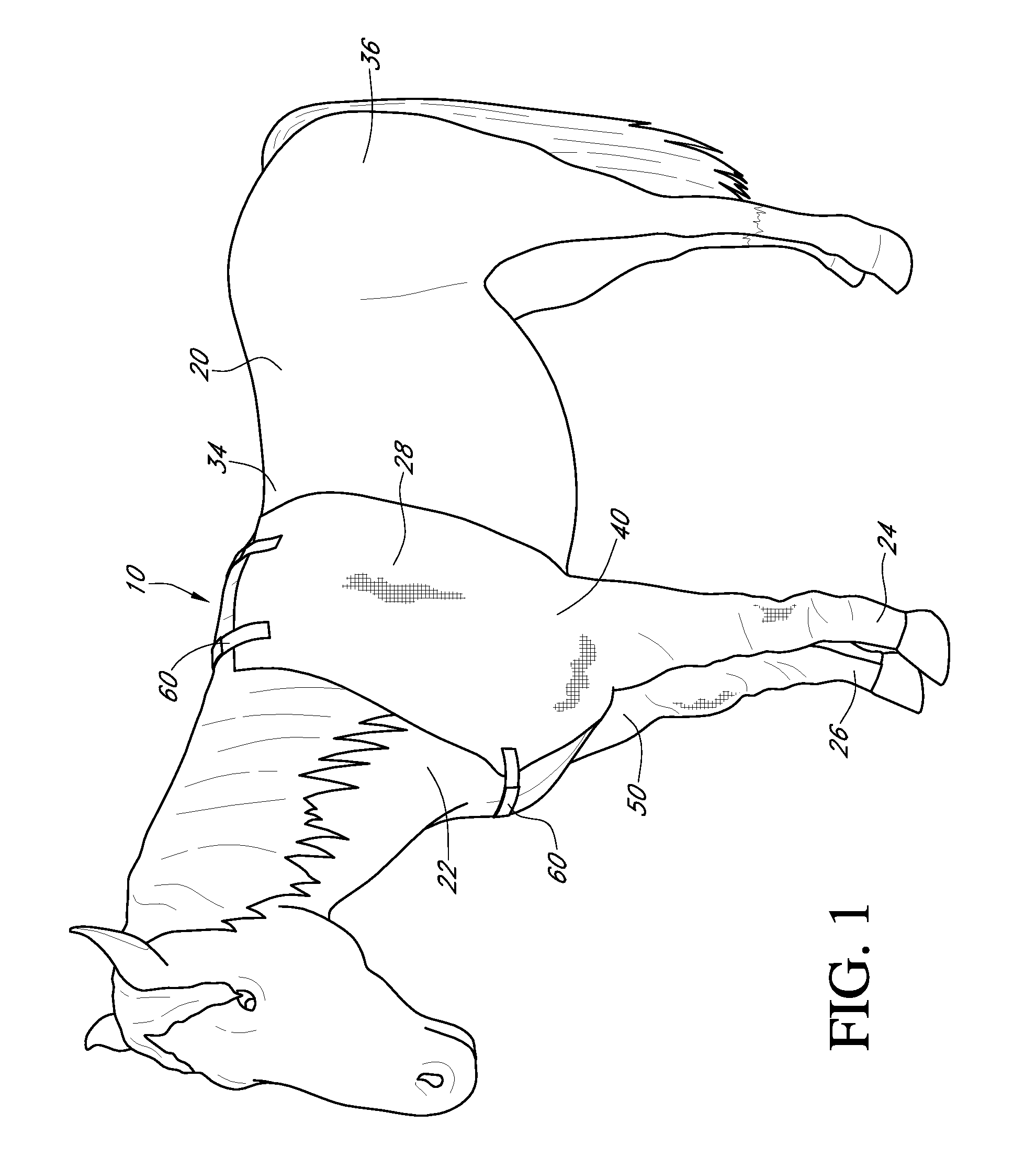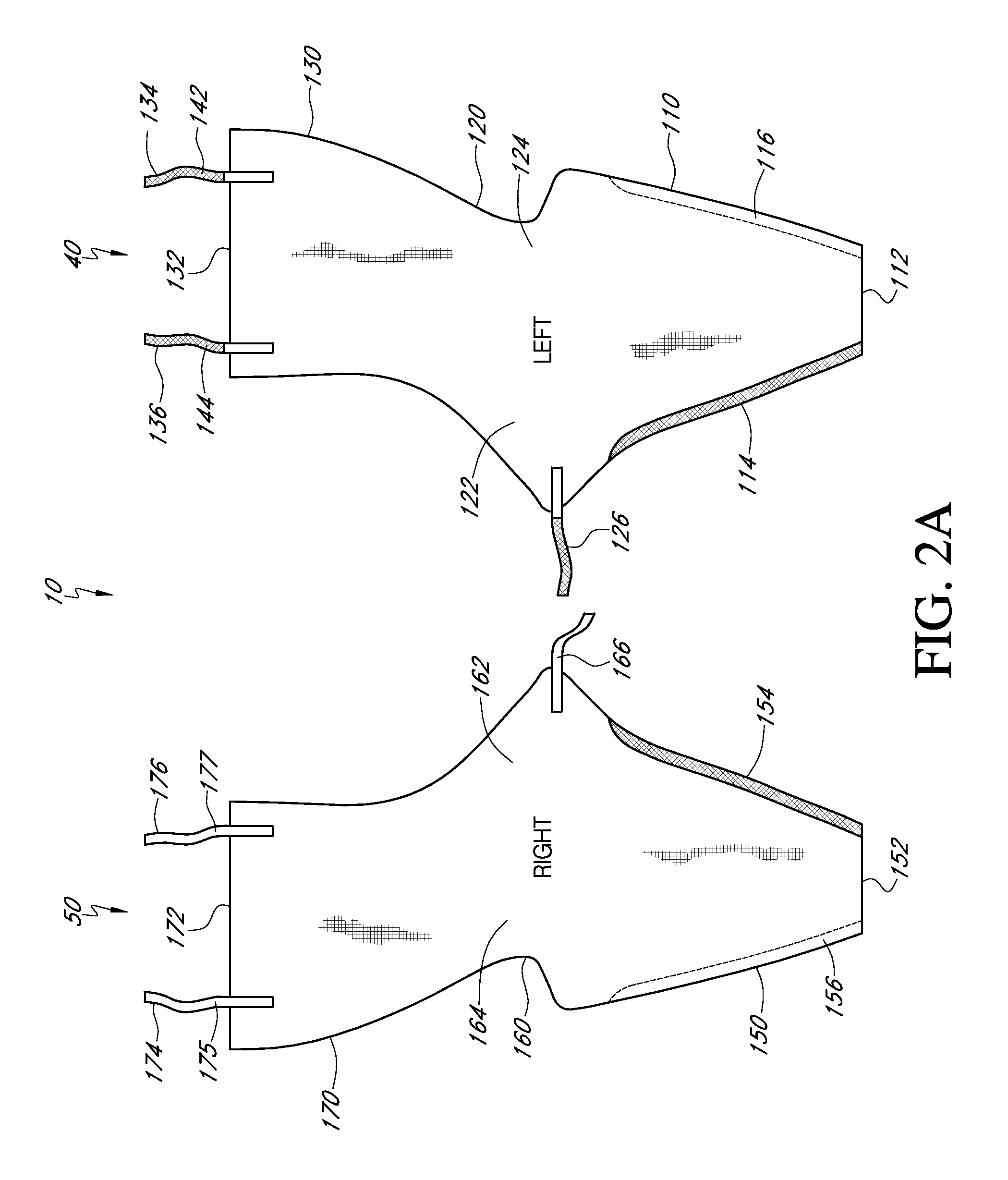Protective garment for livestock
a protective garment and livestock technology, applied in the field of protective clothing for livestock, can solve the problems of livestock being exposed to external elements, pests and nuisances, and affecting the health of livestock, and achieve the effect of convenient dressing of livestock
- Summary
- Abstract
- Description
- Claims
- Application Information
AI Technical Summary
Benefits of technology
Problems solved by technology
Method used
Image
Examples
Embodiment Construction
[0029]Embodiments of the present garment for livestock will be described hereinafter in detail with reference to the accompanying drawings. The structure of embodiments will be described first with reference to FIGS. 1 through 3. A method for attaching a protective garment to livestock will be described in connection with FIGS. 4A through 4C. FIGS. 5 through 7 illustrate different views of a horse wearing embodiments of a protective garment. With reference to FIG. 8, an embodiment of a protective garment for covering both a front portion and a rear portion of livestock will be described.
[0030]In many of the embodiments explicitly disclosed herein, the protective garments are described in connection with sheltering horses from undesirable external elements, such as, for example, insects and sunlight. It should be noted, however, that the protective garments described herein can be used with a variety of livestock, such as, but not limited to, cattle, donkeys, goats, mules, pigs, and ...
PUM
 Login to View More
Login to View More Abstract
Description
Claims
Application Information
 Login to View More
Login to View More - R&D
- Intellectual Property
- Life Sciences
- Materials
- Tech Scout
- Unparalleled Data Quality
- Higher Quality Content
- 60% Fewer Hallucinations
Browse by: Latest US Patents, China's latest patents, Technical Efficacy Thesaurus, Application Domain, Technology Topic, Popular Technical Reports.
© 2025 PatSnap. All rights reserved.Legal|Privacy policy|Modern Slavery Act Transparency Statement|Sitemap|About US| Contact US: help@patsnap.com



